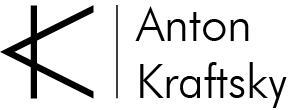Hub#5 Pyramid
Korolev, Dzerzhinsky
55.929908, 37.793903
55.929908, 37.793903
Шум и лазер приходят в поле
Перевернутая зеркальная пирамида - символ нисходящей энергии и максимально неустойчивая фигура. Идеально мимикрирует, отражая окружающие растения, растворяется в пространстве поля. Вытянутая по вертикали, как наконечник стрелы, она будто упала с неба и воткнулась в поверхность земли своими тонкими стальными ножками, практически сливающимися с травой. Принцип конструкции напоминает семена некоторых сорняков, которые таким образом захватывают территорию. Только это незнакомое растение, а странный артефакт заброшенный из другого пространства. Дизайн хаба действительно имеет отношение к внеземному использованию. Поскольку моя локация - город Королёв, то все в нем отсылает к космической индустрии. Форма и зеркальная текстура хаба отсылает к первому искусственному спутнику.

Эскиз и чертеж хаба. 2021 г. Королев
I made a test layout of the hub of a small size and without internal technical equipment. It was important to understand how he mimics in the space of the field and whether he keeps well on steel legs. After that, it was possible to start creating a real hub.









The road to the place was long. At first I rode from the subway by bus. Then he walked for a long time, bypassing the huge zone of the station from the side of the river. I found a place where I could get closer to the area where the mountains of old slag were overgrown with grass and even trees. I had to wade through dense thickets and cross the river through some pipes. Having made my way to the area closer to the center, I came across thickets of white sweet clover and decided to take it as plant material for study. It grew on a completely gray mountain of old ashes. Having collected the right amount of green mass and roots, I carefully moved back. At home, I sorted the plants into parts, dried and crushed, preparing them for work in the laboratory.

White sweet clover.
"Melilotus albus, known as honey clover. Melilotus albus is considered a valuable honey plant and source of nectar and is often grown for forage. Its characteristic sweet odor, intensified by drying, is derived from coumarin.
White and yellow sweetclover are considered valuable honey plants, and the foliage and seeds are consumed by wildlife. They are frequently cultivated for livestock forage and as a cover crop. M. albus has typical weedy attributes such as prolific seed production, persistence and presence along roadsides and railways, and as a result can negatively impact ecosystem services, wildlife habitats, and agriculture." Wikipedia
"Melilotus albus, known as honey clover. Melilotus albus is considered a valuable honey plant and source of nectar and is often grown for forage. Its characteristic sweet odor, intensified by drying, is derived from coumarin.
White and yellow sweetclover are considered valuable honey plants, and the foliage and seeds are consumed by wildlife. They are frequently cultivated for livestock forage and as a cover crop. M. albus has typical weedy attributes such as prolific seed production, persistence and presence along roadsides and railways, and as a result can negatively impact ecosystem services, wildlife habitats, and agriculture." Wikipedia

D. Mendeleev University of Chemical Technology of Russia
(D. Mendeleev University, MUCTR)
(D. Mendeleev University, MUCTR)

In the laboratories of this educational institution, experiments were carried out on the processing of plant materials brought by all project participants from their locations. We burned all parts of the plants separately, so that later they could be submitted for chemical analysis. The search for heavy metals and, first of all, vanadium, which can accumulate in plants and the possibility of their further use, is one of the main goals of the project.
Nizhny Novgorod region
Vyksa Steel Works
Work in residence in the city of Vyksa
August 1-7, 2021, our group spent in the art residence of the city of Vyksa. During the week, we assembled our hubs, set up the connection of the boards, interacted with each other and the area. The result was an installation on the field behind the Vyksa Steel Works. On the last day, each participant mounted their object on the field and we were able to build a network with a central hub. For many it was an important experience. For me personally, this was the beginning of the path to technological art.

Hub
Now let's talk about the filling of the hub. Inside is a radio tuned to low-frequency noise that reacts to the approach of other instruments and a laser aimed at the sky. To create an interaction field, wave oscillations are the best fit. The sounds emitted by the hub are a monotonous hiss, enlivening and at the same time indecipherable. Radio noise is electromagnetic radiation in the radio wave range created by various sources, including extraterrestrial ones, which does not contain relevant information, but can change from our interaction with the hub and when other electromagnetic devices approach. Sometimes voices or music can break through it, which defuses the atmosphere and arouses interest.
The use of a narrow beam of radiation in our case increases the size of the installation by many meters in height and can signal its location to other actors. The laser built into the hub works best at night - this includes night hours in the work schedule. A bright green beam shoots upwards and like an axis from the center of the object, serving as a beacon and a detector of air humidity, since the fog makes it especially noticeable. The mirror surface of the hub enhances this effect and reflects the glow. The color of the laser is green because the whole project is based on working with wild plants, the so-called "green proletarians".
Now let's talk about the filling of the hub. Inside is a radio tuned to low-frequency noise that reacts to the approach of other instruments and a laser aimed at the sky. To create an interaction field, wave oscillations are the best fit. The sounds emitted by the hub are a monotonous hiss, enlivening and at the same time indecipherable. Radio noise is electromagnetic radiation in the radio wave range created by various sources, including extraterrestrial ones, which does not contain relevant information, but can change from our interaction with the hub and when other electromagnetic devices approach. Sometimes voices or music can break through it, which defuses the atmosphere and arouses interest.
The use of a narrow beam of radiation in our case increases the size of the installation by many meters in height and can signal its location to other actors. The laser built into the hub works best at night - this includes night hours in the work schedule. A bright green beam shoots upwards and like an axis from the center of the object, serving as a beacon and a detector of air humidity, since the fog makes it especially noticeable. The mirror surface of the hub enhances this effect and reflects the glow. The color of the laser is green because the whole project is based on working with wild plants, the so-called "green proletarians".
The intensity of the laser glow and the loudness of the radio noise affect the amount of vanadium produced. The length of the beam and its brightness proportionally increase this figure at night. The presence of a working steam generator and various electrical appliances performatively enhances the effects of built-in equipment and allows you to enhance phytomining.
Hub height 120 cm. Weight 1 kg. It is mobile and easy to understand. There are several levels inside. Materials: mirror polystyrene, steel wire, foam board, plastic, wood, "Efir-15" radio receiver, powerful laser module.
Hub height 120 cm. Weight 1 kg. It is mobile and easy to understand. There are several levels inside. Materials: mirror polystyrene, steel wire, foam board, plastic, wood, "Efir-15" radio receiver, powerful laser module.





Vladimir region
Shooting a hub in
the country
the country
Сity of Strunino
In September 2021, I went to another location in order to film the hub in suitable conditions. There was thick fog in the evening and at night, which was necessary for good visibility of the laser beam. The thread of light went into the sky for several tens of meters and then gradually dissolved in the air.






Republic of Karelia
Shooting laser work in the wild
White Sea. Loukhsky district
Also in September 2021, I conducted a survey based on the hub on the shores of the White Sea. The operation of the hub depends on the time of day and season. Actively works in the dark, at night. During the day it mimics the surrounding space, hides. With the onset of darkness, the laser turns on and highlights objects and atmospheric phenomena within its radius of action. Night mining predator. If the beam moves rhythmically and quickly along a certain axis, then this will create a luminous pattern. Vertical - to capture vapor, fine dispersion, smoke, dust in the air, cutting them along the plane and producing live, constantly changing, unique visual imprints that can be fixed, their intensity will affect the level of vanadium production. With this option, it is possible to add a steam generator. The horizontal axis of the laser's movement illuminates plant objects, grass, shrubs that fall into its field of action, turning them into a kind of optical fiber and creating many bright points, the number and intensity of which can affect the production of vanadium.
Exhibition in Cube
Vanadium Bloom
st. Tverskaya, 3, Moscow
In January 2022, we opened the Vanadium Bloom experimental exhibition in the Cube space. It was an important work and the next stage in our research. The exposition presented a scenario of an alternative future, in which plants and machines participate in the joint construction of connections, forming a "vegetable internet".
An important element of the network that supported its work was a flow battery using vanadium, an alternative energy source that some plants accumulate in themselves. At the exhibition, we studied the ability of plants to accumulate vanadium on the example of such species as red fescue, common oats and creeping clover. Various concentrations of the substance were added to the soil. At the end of the exposure, the plants were used for chemical analysis and further research.
An important element of the network that supported its work was a flow battery using vanadium, an alternative energy source that some plants accumulate in themselves. At the exhibition, we studied the ability of plants to accumulate vanadium on the example of such species as red fescue, common oats and creeping clover. Various concentrations of the substance were added to the soil. At the end of the exposure, the plants were used for chemical analysis and further research.




The presence of dry cow parsnip was necessary. It is a symbol of the agricultural method to which we refer, it creates the right atmosphere for the fields. The giant weed is dangerous and indestructible, it stands like a tree when it dries up, but is hollow inside. Those samples that I found near the house, in an abandoned area, 3-3.5 meters high. Many plants, especially those that are visible from the road, were cut down, but in the depths, behind an abandoned building, some of the untouched plants remained. According to my observations, there were 10-15 well-preserved specimens. I gradually brought them home, divided each plant into several components, cleaned, installed fasteners, packed for transportation.
During installation in the exhibition space, we created several foam islands of different height and size with the ground containing different levels of vanadium. In this land we planted both red fescue, sowing oats and creeping clover. Hogweed was placed around these zones, making concrete bases.

